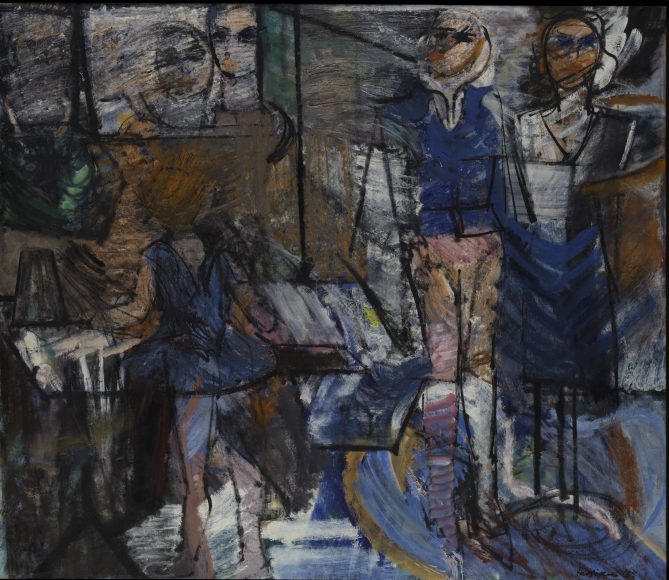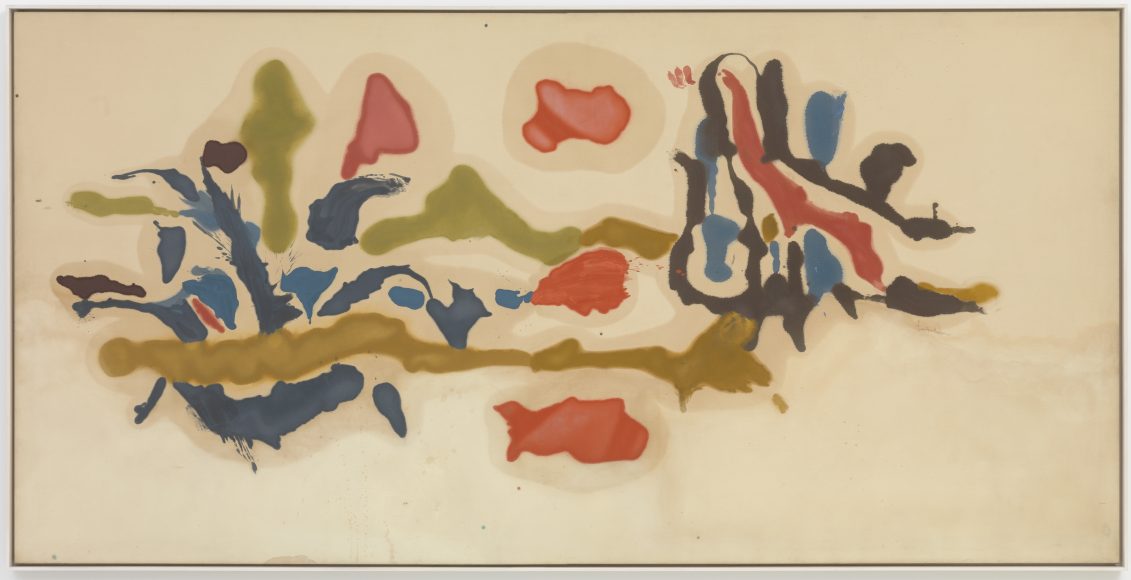While it’s only July, some things are worth waiting a few months for. One such example is the upcoming exhibition, “Sparkling Amazons: Abstract Expressionist Women of the 9th Street Show” at the Katonah Museum of Art.
Opening on Oct. 6 and continuing through Jan. 26, 2020, “Sparkling Amazons” will present the often overlooked contributions by female artists to the Abstract Expressionist movement and the significant role these women played as bold innovators within the New York School during the 1940s and ’50s.
Michele Wije, the show’s curator and associate curator at the Katonah museum, says, “Our staff was looking at past exhibitions that changed the course of art history and one of the main ones in America was the ‘9th Street Show,’ which was a kind of ‘Salon des Refusés’ for New York artists who were being shut out of exhibition spaces in the uptown galleries and whose artwork was not being purchased by museums.”
Wije said the museum decided to give their upcoming exhibition a unique spin by focusing on the 12 women featured in “9th Street Show,” which took place in 1951 and was organized by then fledgling gallerist Leo Castelli.
“This is the first time works by these revolutionary women will be brought together since the “9th Street Show” took place 68 years ago,” Wije says. “Some 30 works of art, alongside documentary photography, have been selected to capture an important moment in the history of Abstract Expressionism and the women who contributed to it.”
At the time, the women were reputedly referred to as “Sparkling Amazons,” a tongue-in-cheek designation that underscored the patronizing attitude of the time. Wije believes these women would neither have viewed themselves as “amazons” nor as feminists. “They simply worked and lived as artists, pursuing their professions with the same dedication as their male counterparts even though the social stakes were much higher for them at the time,” Wije says.
Among the most well-known artists in the museum exhibition is Helen Frankenthaler. “Frankenthaler was the youngest of the women artists in the ‘9th Street Show’ and became most famous for the invention of stain painting, a technique of diluting her paint so that it saturates the raw canvas. She had seen the gestural paintings of Jackson Pollock and took it one step further,” Wije says.
Among Frankenthaler’s works in the show is “Mount Sinai” (1956), a piece on loan from the nearby Neuberger Museum of Art in Purchase. “This piece shows the transition Frankenthaler was making from a painted to a saturated canvas. If you look at it very carefully, you can see both of those elements at work,” Wije says. Also included in the show is Frankenthaler’s “Seascape with Dunes” (1962). Inspired by a trip to Cape Cod and awash in beige, red, blue and black, the artwork is a great example of stain painting.
Another highly recognized artist in the Katonah show is Elaine de Kooning, wife of the Abstract Expressionist Willem de Kooning. Wije says, “Elaine de Kooning worked on both the heroic scale that male artists were working at but also in this very intimate scale.”
The show presents a very small, untitled work from 1949, which measures approximately 10 x 8 inches and is purely abstract alongside her huge mural titled “Bull Fight” (1959), which is the largest in a series of paintings and measures over 6 feet high by 10 feet wide.
“While it’s an abstraction, it’s almost a little figural because if you look very closely you can see the bull,” Wije says. She adds that the choice of bright hues in “Bull Fight” can be attributed to the time de Kooning spent in New Mexico, where the light is completely different and the vivid nature of being out west informed de Kooning’s color choices.
Many visitors will also recognize the work of Lee Krasner, who has three pieces in the exhibition. One of the works is ‘The Seasons,’ which is on loan from the Whitney Museum of American Art. “This painting is the culmination of a series of seven that Krasner did called ‘The Earth Green’ and was painted in 1957 after her husband Jackson Pollock’s death,” Wije says. “It’s a really tremendous painting, both in terms of its scale (92 ¾” x 203 7/8”) and it’s subject matter. You can see that it’s very lyrical, sexual and female in the way that evokes a confirmation of life coming out a very grief stricken period.”
Also part of the “Sparkling Amazons” show is a work by the esteemed artist Joan Mitchell called “Slate” (1959). A native of Chicago, Mitchell came to New York and became very involved with the Abstract Expressionist group in the city before moving to Paris. “She, too, abstracted things in her canvases. You can see the way she has made large, gestural marks on the canvas and allowed the paint to drip,” Wije says.
Grace Hartigan is another important Abstract Expressionist painter who has been selected for the show. At a young age, Hartigan was singled out by prominent art critics such as Clement Greenberg. Her piece “East Side Sunday” (1956) was bought by the Brooklyn Museum very early on in her career. According to Wije, it is part of a series by the artist that was broadly known as the “City Life” paintings and was based on pictures taken by the artist from her windows on Essex Street in Manhattan.”
“‘East Side Sunday’ is an abstracted version of a fruit vendor that used to work down below the artist’s apartment. Overall it’s an abstract image, but Hartigan was still very much rooted in the real world in her artwork. She really went back and forth between doing figural painting and purely abstract works,” Wije says.
Other female artists in the show did not receive as much critical acclaim, yet were very important in the Abstract Expressionist movement. Works chosen for the show range from the plaster sculptures of Austrian-born artist Day Schnabel to the surrealist-inspired paintings of Swiss-born artist Sonja Sekula. Other unsung artist in the exhibition include Perle Fine, Anne Ryan, Yvonne Thomas, Jean Steubing and Guitou Knoop.
“These women have been overlooked and undervalued as contributors to art history, a fact that this exhibition addresses,” Wije says. “Everyone knows who the famous women of Abstract Expressionism were, but it was interesting for me to tease out what these other women were making and how they fit into the context of the female artists that we know so much about.”
For more, visit katonahmuseum.org.


